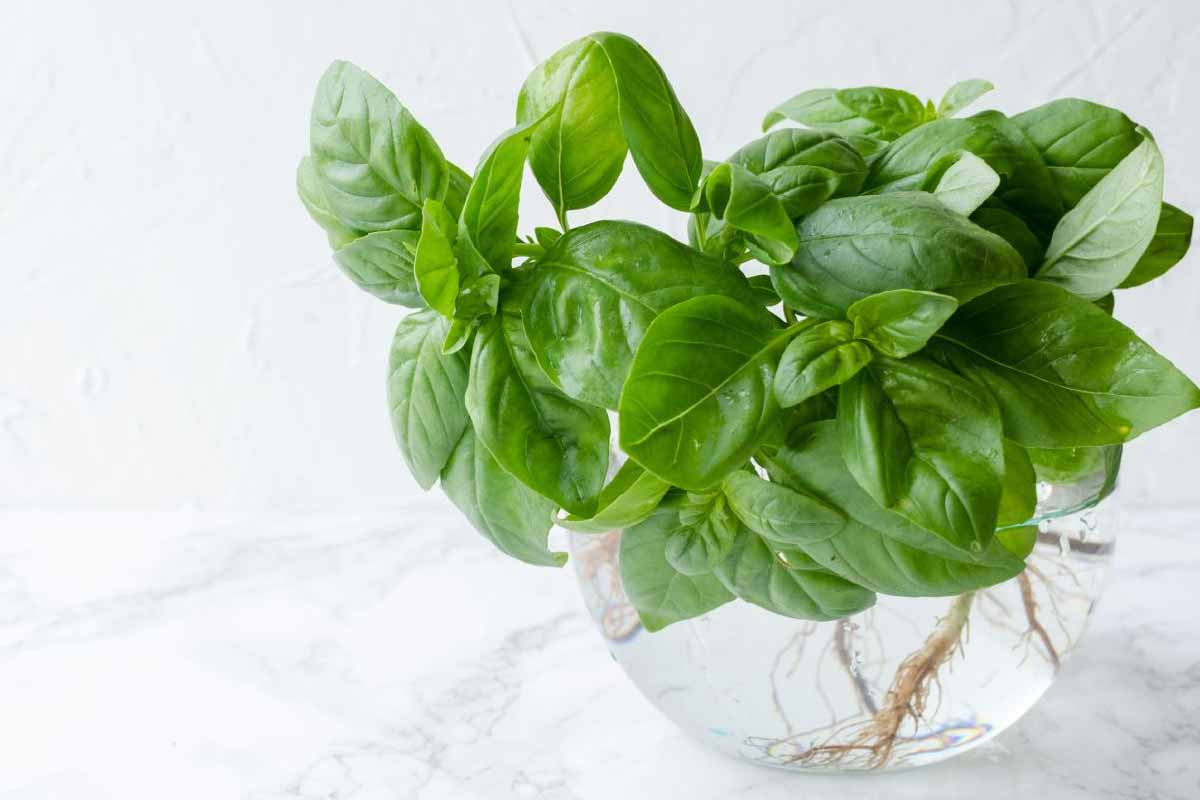One plant can feed your kitchen for months. Multiply Basil with a few clean cuts and a steady routine. Start from a healthy stem, then guide new roots and leaves with light, warmth, and gentle care. This method suits a windowsill pot or a small bed, so you harvest often without buying new starts. You’ll keep flavor bright, leaves tender, and bunches coming, while each step stays simple, fast, and repeatable.
Cuttings Over Seeds: Speed, Reliability, and True-to-Type Results
Taking cuttings delivers identical flavor, aroma, and leaf shape, so your favorite plant multiplies faithfully. Farmer Anna Hackman of The Naked Botanical says propagation stays “super easy” when you work clean and choose vigorous stems. Because Basil often roots faster than it sprouts, you shorten the wait for leaf harvests and skip slow, uneven germination.
Seeds in outdoor beds face hazards, as Hackman notes. Birds can pluck tender seedlings, while curious animals disturb soil as they dig for bugs and worms. Wind dries the surface, and cool nights stall growth. Indoors, seed trays still need heat mats, steady moisture, and space, which adds steps and delays your first usable bunches.
Cuttings simplify the calendar. You snip, then root, and finally transplant, so timing stays clear. Because cuttings copy strong traits, you preserve disease resistance and growth habit. If a sowing fails, Hackman simply clips a thriving plant and restarts. The path stays flexible, while your windowsill stays green and productive.
Water-Rooted Basil Cuttings, Step by Step
Choose a healthy, 4- to 6-inch stem and cut just below a leaf node. Remove the lower leaf sets, leaving only the top cluster, since submerged foliage decays and clouds water. Place the stem in a glass or mason jar filled with clean water, then set it in bright, indirect light to protect tender tissue.
Change the water every few days, because fresh oxygen discourages bacterial growth. Expect tiny roots in 5 to 10 days, as Luay Ghafari of Urban Farm and Kitchen explains. When they extend to about two inches, the cutting transitions well to potting mix. Handle the fragile roots gently, and keep the first watering light yet thorough, so soil settles.
Label jars by variety, since flavors differ. Keep containers apart so stems don’t crowd. Rotate jars for even light, while wiping algae from glass. If a stem wilts, recut below a fresh node and try again. This low-risk routine scales easily, so a single jar can feed a whole planter.
Soil Propagation That Sets New Plants Up to Thrive
Prepare a nursery pot with seed-starting or high-quality potting mix. Moisten evenly until it clumps, not drips. Dip the cut end in rooting hormone, as Ghafari recommends, then slide it into a pre-made hole to avoid scraping powder off. Firm lightly, because Basil stems bruise if packed too hard or buried too deep.
Park the pot in a warm, bright spot out of direct sun. Bright shade limits stress while tissues knit. Keep the surface slightly damp, using a squeeze bottle or fine nozzle so droplets don’t dislodge stems. Consistent humidity helps, though a loose cover must vent, or trapped moisture encourages rot and fungus gnats.
Watch for fresh leaves and gentle resistance when you tug, both signs of rooting. In small pots, white roots often peek from drainage holes. Transplant to a larger container, a raised bed, or the ground with good drainage. Space plants well, because airflow matters. Add a dilute starter feed after new growth appears.
Transplant and Training Tips to Keep Basil Productive
Warmth and sunlight drive foliage. Certified master gardener Angela Judd plants in compost-rich substrate, then provides each plant space to expand. Indoor growers utilize the kitchen windowsill, while outdoor gardeners select a sunny bed that drains adequately. This herb grows inside or outside, and consistent light maintains flavor intensity while leaves remain tender.
Pinch above a pair of leaves to shape a branching, bushy plant. That cut redirects energy into side shoots, so harvest volume rises, and early flowering slows. When clusters of buds appear, snip them promptly. Frequent picking during peak growth maintains tender texture. Because Basil regrows quickly, light, regular harvests beat heavy, occasional cuts.
Water thoroughly, then permit the top inch to dry slightly, since waterlogged roots languish. Mulch containers with fine bark or coco coir to regulate moisture and minimize splash. Indoors, rotate pots weekly for uniform growth. Outdoors, stake larger plants against wind. With simple training, your compact hedge of leaves keeps giving.
Mistakes to Avoid and Simple Ways to Fix Them
Never take cuttings from sick plants. Black or gray blotches often signal downy mildew, which spreads through humidity and shade. Aphids also gather on tender tips, as Hackman warns, so check undersides and rinse with water, then repeat until clean. Healthy mother plants give clean starts, and Basil responds quickly after pests are removed.
Don’t cut stems too short. Four to six inches proves ideal, with at least one solid node below the waterline or soil surface. Very short pieces lack reserves and stall. Use sharp, sanitized scissors to avoid crushing tissues. Trim just below a node, because that location roots readily and seals faster.
Expect a few misses. Judd notes that transplants sometimes stall after potting. Keep them warm, lightly shaded, and evenly moist while roots settle. If a cutting fails, simply prepare a fresh one and retry. Because the steps are quick and affordable, you keep momentum while your window box steadily fills.
Small, steady steps that keep new plants coming all season
Simple routines create steady abundance. You cut clean stems, change water on time, and transplant gently into compost-rich mix. You pinch above leaves, then harvest often, while removing flowers fast. With patience, care, and repetition, Basil multiplies easily. The flavor stays bright, the leaves stay tender, and the supply feels endless.
